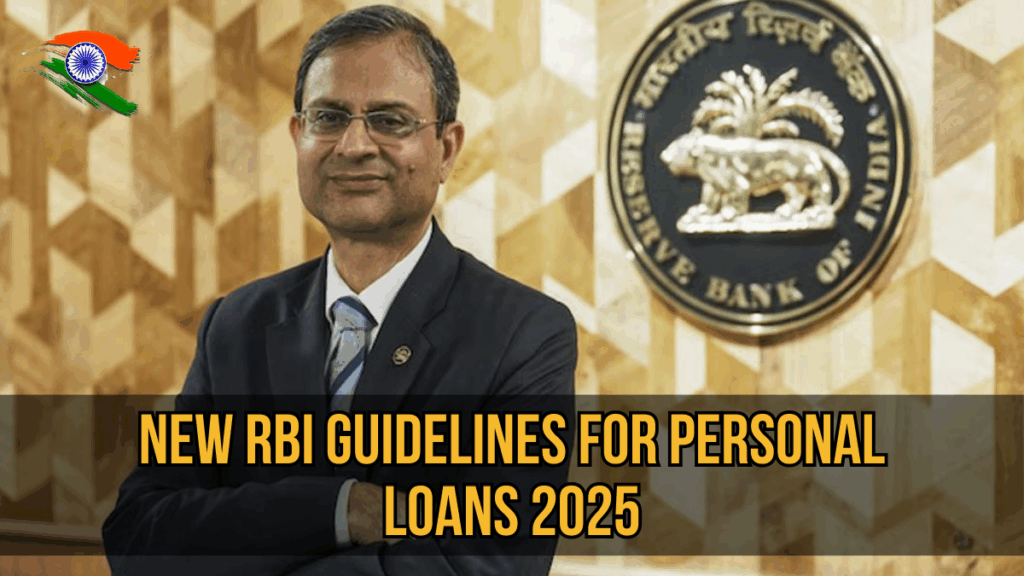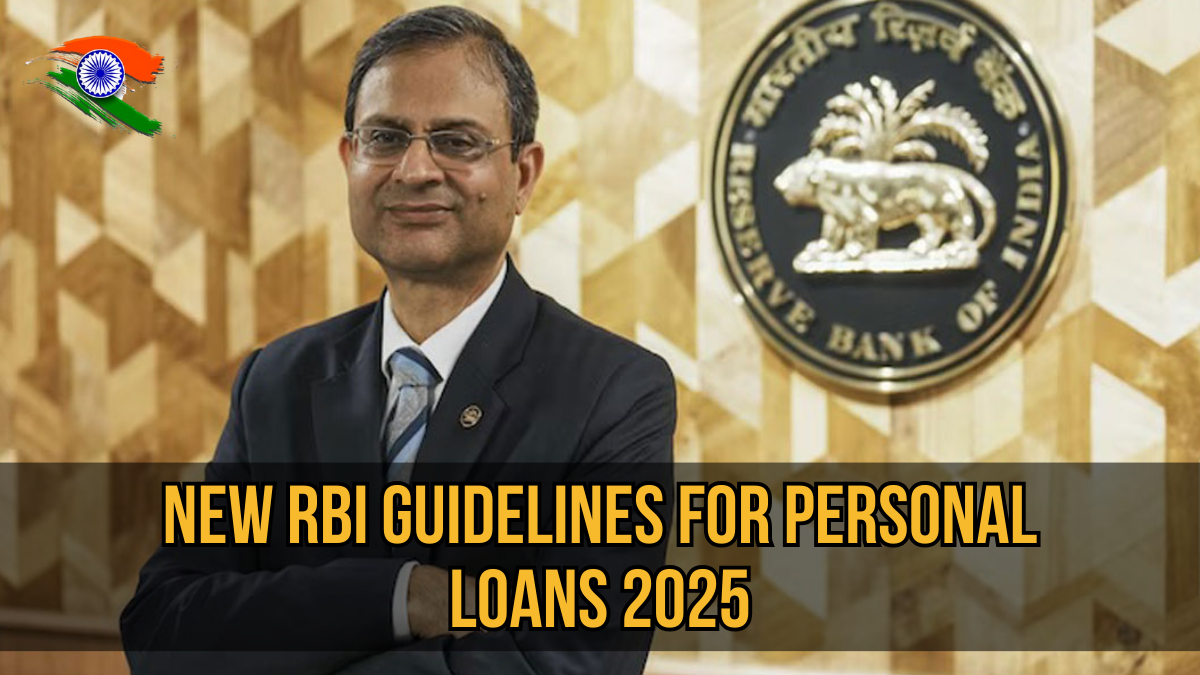The Reserve Bank of India (RBI) has introduced new personal loan rules in 2025 to make lending more transparent, reduce borrower defaults, and encourage financial discipline. These guidelines apply to all banks, NBFCs (Non-Banking Financial Companies), and digital lending platforms offering personal loans.

From loan-to-income caps to risk-based capital requirements and stricter KYC norms, these reforms aim to safeguard both borrowers and lenders.
Loan-to-Income (LTI) Ratio Cap
Under the new rules, a borrower’s total EMI payments including the new loan and cannot exceed 50% of their monthly income.
How It Works:
- Before sanctioning a loan, lenders must verify all existing EMIs from credit bureau reports and bank statements.
- Self-declared debt without proof will not be considered.
Impact:
This ensures borrowers do not overextend financially, reducing the risk of loan defaults.
Credit Score-Based Loan Approvals
Loan eligibility will now be directly tied to the applicant’s credit score.
- Higher Scores → Better loan offers, lower interest rates.
- Lower Scores → Reduced loan amounts or higher interest rates.
- Multiple loan applications in a short span can negatively impact credit scores.
Tip: Maintain a credit score above 750 for better approval chances.
Quick Summary
Particulars |
Details |
|---|---|
Effective From |
2025 |
Applicability |
Banks, NBFCs, Digital Lending Platforms |
Key Rule 1 |
Loan-to-Income ratio capped at 50% |
Key Rule 2 |
Loan eligibility tied to credit score |
Key Rule 3 |
Higher capital requirements for risky loans |
Key Rule 4 |
Stricter KYC and income verification |
Key Rule 5 |
Mandatory Key Facts Statement for digital loans |
Official Website |
Higher Risk-Based Capital Requirements
To protect against potential defaults, RBI has increased the risk-weightage for unsecured personal loans:
Borrower Profile |
Previous Risk Weightage |
New Risk Weightage |
|---|---|---|
Standard Borrowers |
100% |
125% |
High-Risk Borrowers |
100% |
150% |
Effect on Banks/NBFCs:
- They must hold more capital against risky loans.
- Likely to make lenders more cautious with first-time borrowers or low credit score applicants.
Stricter KYC & Income Verification
Know Your Customer (KYC) standards have been strengthened.
Lenders must now:
- Verify bank statements, Income Tax Returns (ITRs), and current employment status.
- Avoid instant approvals without documentation.
- Conduct additional checks for gig workers and self-employed applicants.
Impact on Borrowers: Approval timelines may increase, but loan processes will become safer and more reliable.
Digital Lending Transparency Rules
Digital loan providers must ensure full clarity in loan offers.
Mandatory Disclosures Include:
- Lender’s name
- Loan amount and tenure
- Interest rate and EMI amount
- Penalties for late payments
- Key Facts Statement (KFS) with complete loan details
Purpose: Enables borrowers to compare loan offers easily and avoid hidden charges.
Loan Eligibility Based on Income – New RBI Matrix
The new guidelines also set maximum EMI limits based on monthly income and existing debt.
Monthly Income |
Existing EMIs |
Max New EMI Allowed |
Approx. Loan Limit (3 yrs @ 8%) |
|---|---|---|---|
₹50,000 |
₹10,000 |
₹15,000 |
₹4.8 lakh |
₹75,000 |
₹20,000 |
₹17,500 |
₹5.6 lakh |
₹1,00,000 |
₹30,000 |
₹20,000 |
₹6.4 lakh |
Note: The actual sanction will depend on the applicant’s credit score, employment stability, and repayment history.
Benefits of the New RBI Guidelines
For Borrowers:
- Lower risk of over-borrowing
- Transparent digital loan offers
- Protection from predatory lending practices
For Lenders:
- Reduced default rates
- Better risk management through credit-based assessments
Key Takeaways for Loan Applicants
- Keep your credit score healthy by avoiding missed payments.
- Maintain your total EMIs within 50% of monthly income.
- Prepare all KYC and income proof documents before applying.
- Compare multiple offers using the Key Facts Statement.
Official Reference
For the full notification and compliance guidelines, visit:
Reserve Bank of India – Official Website
FAQs: New RBI Personal Loan Guidelines 2025
1. When do the new RBI personal loan rules come into effect?
Ans. The rules are applicable from 2025 across all banks, NBFCs, and digital lenders.
2. What is the maximum EMI allowed under the new LTI rule?
Ans. Your total EMIs, including the new loan, cannot exceed 50% of your monthly income.
3. Will my credit score affect my loan approval?
Ans. Yes. Lower scores may result in reduced loan limits or higher interest rates.
4. Are instant personal loan approvals without documents still allowed?
Ans. No, stricter KYC and income verification rules are now mandatory.
5. What is the Key Facts Statement (KFS)?
Ans. A document that clearly lists loan details such as lender’s name, interest rate, EMI, tenure, and penalties.
6. Do these rules apply to all types of loans?
Ans. These specific guidelines apply to unsecured personal loans, but other loan categories may have separate regulations.
For More Information Click HERE




